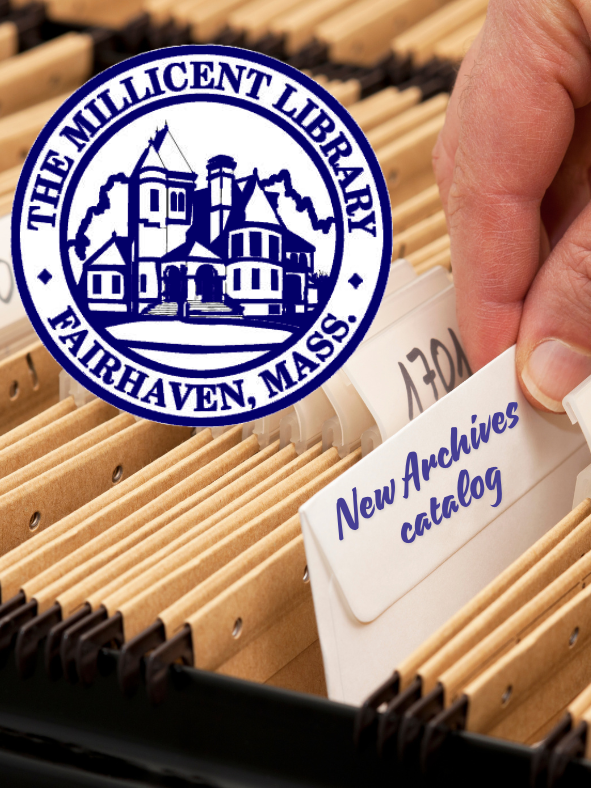
If you've visited our website in the last few weeks, you may have noticed that we've implemented a new catalog for our archives collection. The catalog was implemented with grant funding from the South Coast Community Foundation's Martha G. Coggeshall Fund.
So what is an archives catalog, and why is it useful for our library?
Background on the project
As many of our patrons know, the Millicent Library is the custodian of a large collection of archival and special collections materials -- unique or rare books, manuscripts, photographs, art, and so much more that document the rich history of our library and our community. These are materials of enduring historical or artistic value that we preserve for our patrons and for future generations to learn from and be inspired by. While non-circulating, the materials are open to the public for research by appointment in our archives reading room, located in the lower level of the library (with the exception of items that are on permanent or temporary display, which you can see by walking through the library!).
Despite the fact that materials are open to the public, in the past they were often inaccessible because they were mostly uncataloged. Patrons may have seen archival materials at special exhibits, or heard about them through word-of-mouth, but they couldn't browse through a centralized list of our archives holdings, the way they could browse other library materials like books or DVDs. On the back end, library staff relied on institutional memory, scattered inventories, and muscle memory to locate items related to research requests. With our new archives catalog, we're seeking to change that.
What's going in the new catalog?
It is our goal to one day get all of our archival collections materials listed in our catalog. This includes what materials we have (titles and descriptions), but also when they were created (dates), why we have them (contextual historical information) where they were created, and who created them. Of course, some catalog entries will be more detailed than others, because we have more information about some of our materials than others.
But we're just at the beginning of what will be a long project. For now, we are working to get our highest value and most used collections in the catalog. We are adding more materials and information into the catalog every week, so we encourage patrons to check back often to see what's been added.
It's important to note that this is not intended to be an environment for viewing digitized materials online. In most cases, patrons will need to come into the library in person, or submit a research request via e-mail, to access archives materials.
How is an archives catalog different from a regular library catalog?
A library catalog and an archives catalog serve different purposes and contain distinct types of information. A library catalog primarily lists books, journals, and other published materials, organized for easy retrieval and circulation. It focuses on current availability and bibliographic details, such as author, title, and subject. In contrast, an archives catalog documents unique/historical materials such as manuscripts, photographs, and records. It emphasizes provenance and context, providing detailed descriptions of the items' origins and significance. While both serve to enhance access to information, their content and structure reflect the differing roles of libraries and archives in preserving knowledge and history.
Where can I access the catalog?
The archives catalog is available online at archives.millicentlibrary.org. Patrons can use the search bar to find specific materials or can browse our collections by using the menu bar at the top of the page.
Get involved
Maybe you're reading this and thinking "this sounds like a lot of work!" It sure is! We think it's worth it, though, and if you do, too, we encourage you to volunteer with us! If you can spare some time to help with data entry, collection organization, inventorying, or labeling, we encourage you to get in touch with our archivist: vhurst@sailsinc.org, or call the library at 508-992-5342. Thank you in advance in helping us make our wonderful materials more accessible to the public!


